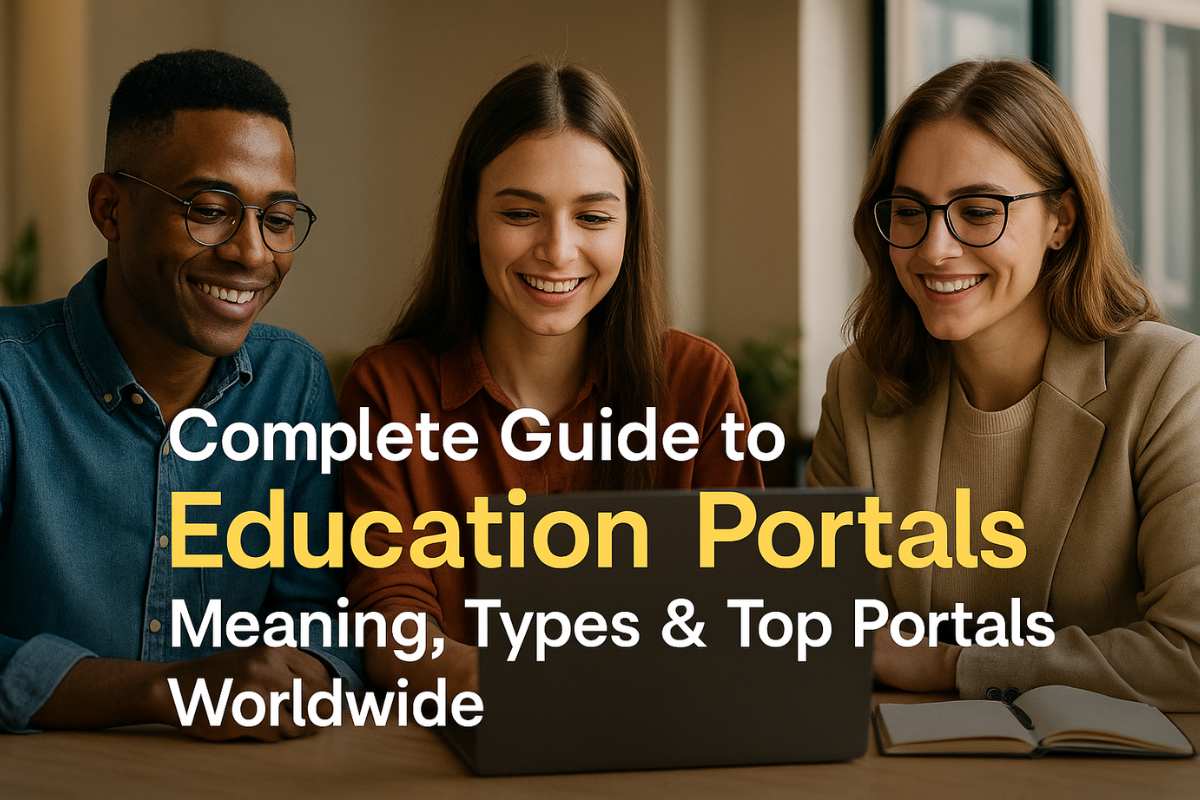Complete Guide to Education Portals: Meaning, Types & Top Portals Worldwide (2025)
An education portal is an online platform that provides students, teachers, and parents with access to educational resources, tools, and communication systems. It connects all stakeholders under one digital space, making learning and management faster and easier.
By 2025, education portals will have become an essential part of modern schooling, enabling institutions to manage admissions, classes, grades, assignments, and even virtual learning from anywhere in the world.
Importance of Education Portals in Modern Learning
Education portals have transformed the way schools, colleges, and universities operate. They bring accessibility, flexibility, and efficiency to learning.
Students can submit homework, access eBooks, and join online classes, while teachers can upload lessons, manage grades, and track progress digitally.
Portals also simplify communication between parents, teachers, and students, creating a smart, connected education ecosystem.
Main Features of an Education Portal
A well-developed education portal offers several key features:
- Online Registration & Admission: Students can apply, upload documents, and track application status.
- E-Learning Management: Teachers upload lectures, assignments, and study material for remote learning.
- Student Dashboard: Personalized access to grades, schedules, and attendance.
- Communication Tools: Message boards, live chats, and notifications keep everyone informed.
- Digital Library: Access to eBooks, journals, and study materials anytime, anywhere.
These features make portals the backbone of digital education systems worldwide.
Types of Education Portals
Different types of portals serve specific educational purposes. Below are the most common ones:
1. Student Portals
Student portals allow learners to view grades, course materials, exam results, and announcements. Examples include:
- myStudentPortal (used by various US universities)
- PowerSchool Student Portal (used in schools globally)
2. Teacher Portals
Teacher portals provide access to teaching resources, class management tools, and student progress reports. Examples include:
- Google Classroom
- Blackboard Instructor Portal
3. Parent Portals
Parent portals help guardians monitor attendance, behavior, and academic progress. Example:
- Skyward Family Access
4. University & College Portals
Used by higher education institutions for admissions, learning, and research:
- Harvard University Portal (My.Harvard)
- Stanford AXESS Portal
- University of Phoenix Student Login Portal
5. Government & National Education Portals
Governments in different countries use centralized systems for student records and scholarships:
- USA: Federal Student Aid (studentaid.gov)
- India: National Scholarship Portal (NSP)
- UK: UCAS Application Portal
- Australia: myGov Education Portal
6. E-Learning & LMS Portals
Learning Management Systems (LMS) like Moodle, Canvas, and Coursera allow users to access online courses, certifications, and digital classes globally.
Top Education Portals in the United States
Here are some of the most popular US-based education portals in 2025:
These platforms serve millions of students across the US and are used by both private and public institutions.
Global Education Portals: Leading Platforms Worldwide
Education technology has grown globally, and many countries now rely on digital portals for academic management.
United Kingdom
- UCAS (Universities and Colleges Admissions Service)
- Open University Online Portal
Canada
- myCampus Portal
- Ontario Learn
India
- Diksha Portal (Digital Infrastructure for Knowledge Sharing)
- SWAYAM (Study Webs of Active Learning for Young Aspiring Minds)
Australia
- myGov Student Services Portal
- TAFE NSW Online Learning Portal
These portals enhance digital education, enabling access to quality learning worldwide.
Benefits of Using Education Portals
Education portals provide several advantages for students and institutions:
- 24/7 Accessibility: Learn or manage academic tasks at any time.
- Paperless Management: Reduces manual work and paperwork.
- Improved Communication: Keeps teachers, students, and parents connected.
- Centralized Data Storage: Securely stores records and performance data.
- Efficient Administration: Automates scheduling, admissions, and reporting.
How Education Portals Are Shaping the Future of Learning
The future of education is digital, and portals are leading the change.
With the rise of AI-powered learning tools, personalized dashboards, and virtual classrooms, students now experience flexible and interactive learning.
From elementary schools to global universities, portals have made education borderless and accessible for everyone.
Also Read: Complete Guide to PlayStation Portal (2025 Edition)
Challenges in Education Portals
Despite their benefits, some challenges still exist:
- Data Security & Privacy Risks
- Technical Glitches or Downtime
- Limited Internet Access in Remote Areas
- Lack of Digital Training for Teachers
However, with continuous innovation and government support, these issues are being minimized over time.
Conclusion
Education portals have completely transformed how the world learns and manages academics.
From US-based systems like PowerSchool and Canvas to global portals like UCAS and SWAYAM, these platforms continue to make education smarter, faster, and more accessible.
In the coming years, the integration of AI, analytics, and automation will make portals even more powerful, building a future where every learner, anywhere, has equal access to quality education.


